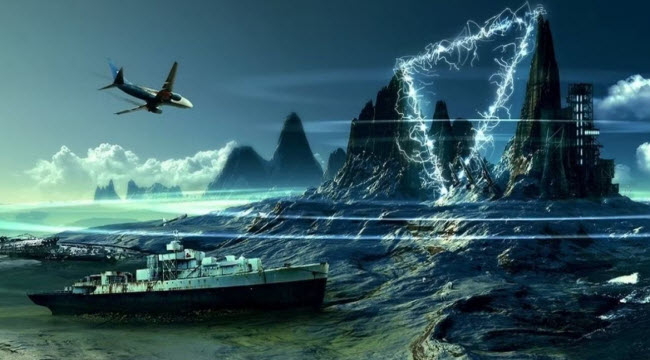Despite humanity’s remarkable achievements in space exploration and the vast knowledge we have gained about the universe, Earth still holds some of its most perplexing mysteries. One such enigma lies in the vast expanse of the Atlantic Ocean, known as the Bermuda Triangle. This area, infamous for its unexplained disappearances, has claimed numerous ships and aircraft, including a squadron of American bombers. What’s particularly baffling is that many of these disappearances occurred under clear weather conditions, without any distress signals or warnings, while survivors often reported experiencing strange navigational anomalies.
The Bermuda Triangle, also known as the “Devil’s Triangle,” covers over 1.3 million square kilometers. Its boundaries stretch from Miami, Florida, to Bermuda and Puerto Rico. The legend of the Bermuda Triangle began during Christopher Columbus’s first voyage to the New World. Columbus reported seeing a large fireball, possibly a meteor, crash into the sea one night. He also noted unusual compass readings, likely because, at that time, the area was one of the few places where true north aligned with magnetic north. The mystery was further amplified by William Shakespeare’s play “The Tempest,” which some believe was inspired by a real shipwreck in Bermuda.

Despite numerous accounts of unexplained disappearances in the Bermuda Triangle, it wasn’t until the 20th century that the mystery gained widespread attention. In March 1918, the cargo ship USS Cyclops, measuring 165 meters in length and carrying over 300 men and 10,000 tons of manganese ore, vanished between Barbados and Chesapeake Bay. Remarkably, the ship did not send out any distress signals, despite being equipped for such communications, and no wreckage was ever found. President Woodrow Wilson famously remarked, “Only God and the sea know what happened to the great ship.” In 1941, two ships similar to the Cyclops disappeared in the same region without leaving any trace. This led to the emergence of a new pattern in disappearances: ships vanishing only to be found abandoned later.

The Bermuda Triangle’s mystery extends beyond ships to aircraft as well. In December 1945, five American Navy bombers, carrying 14 men, took off from Fort Lauderdale, Florida, for a training mission over shallow waters. They encountered compass malfunctions, leading to their disorientation, and eventually ran out of fuel, forcing them to ditch in the sea. On the same day, a rescue plane carrying 13 crew members also disappeared. Despite an extensive search lasting weeks, no evidence was found, and the official Navy report declared the incident as if the planes had “flown to Mars.”

The term “Bermuda Triangle” was coined by writer Vincent Gaddis in a 1964 magazine article. Since then, the area has witnessed additional mysterious incidents, including the disappearance of three passenger planes despite reports of “everything being fine.” Charles Berlitz further fueled the legend with his bestselling 1974 book on the subject. Since then, numerous writers have speculated about causes ranging from extraterrestrial activity and the lost city of Atlantis to sea monsters and time distortions. Meanwhile, more rational explanations include magnetic anomalies, massive methane gas eruptions from the ocean floor, and rogue waves—giant waves that can exceed 30 meters in height, capable of destroying ships or aircraft.

Despite these theories, no single explanation has resolved the mystery. Some argue that seeking a common cause for all disappearances in the Bermuda Triangle is akin to finding a universal reason for every car accident in Arizona. Despite the area’s reputation and the severe storms and reefs that can pose navigational challenges, major marine insurance companies do not classify the Bermuda Triangle as a particularly dangerous area. The U.S. Coast Guard has reviewed numerous incidents in the region over the years and found no evidence of anything beyond natural causes. The National Oceanic and Atmospheric Administration (NOAA) has also stated that there is no evidence to suggest that mysterious disappearances occur more frequently in the Bermuda Triangle than in other well-traveled areas of the ocean. As a result, ships and aircraft continue to navigate the region without major issues. In fact, a 2013 study by the World Wildlife Fund identified the world’s ten most dangerous waters for shipping, and the Bermuda Triangle was not among them.
